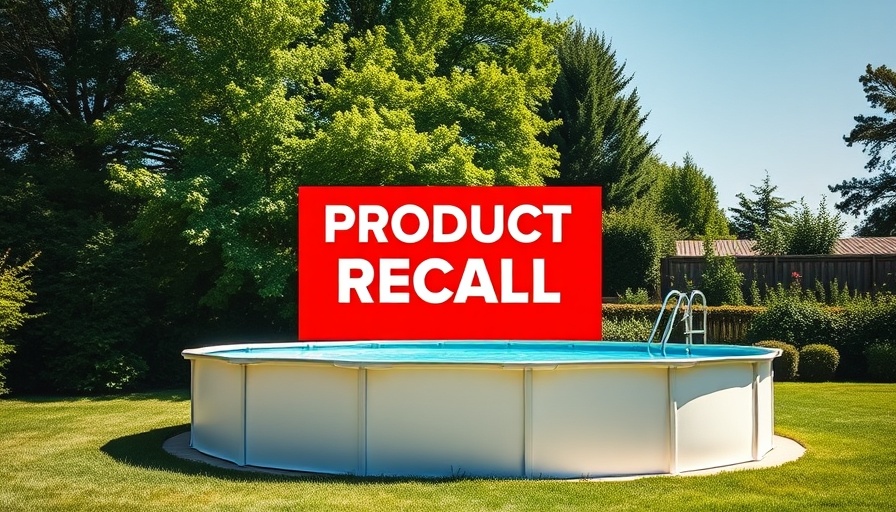
5 Million Above-Ground Pools Recalled: What You Need to Know
This summer, millions of families across the United States are reminded of the importance of pool safety as the U.S. Consumer Product Safety Commission (USCPSC) has recalled over 5 million above-ground pools due to a serious drowning hazard. The issue arises from the compression strap surrounding the pool legs, which can provide children with access to the pool, posing an increased risk of drowning. As a safety-conscious parent or caregiver, understanding the implications of this recall is essential for keeping your loved ones safe.
Understanding the Risk: A Closer Look at the Recall
According to the USCPSC, there have been at least nine reported child fatalities linked to these pools, highlighting a critical need for vigilance among pool owners. The recalls affect pools manufactured by several popular companies, including Bestway, Intex, and Polygroup, dating back as far as 2002. Each recalled pool model is at least 48 inches deep and uses the problematic compression straps, which can inadvertently create footholds that allow unsupervised children to climb into the pool.
Safety Measures to Take Immediately
If you own one of these affected pools, the USCPSC recommends taking immediate action. You can request a repair kit from the manufacturer, which includes a replacement rope designed to secure the pool’s structure in a safer manner than the original compression strap. Ensure you install the rope properly before removing the old strap, and it's crucial to supervise children closely or drain the pool until the necessary repairs are completed.
Parental Guidance and Supervision: The Best Preventative Measures
While waiting for repairs, educating your children about pool safety is imperative. Discuss the importance of swimming only when an adult is present, and consider using barriers or pool alarms to enhance safety around your above-ground pool. Drowning is often a silent event, and even a moment of distraction can lead to tragedy. Keeping swim essentials like life vests and rings nearby can also improve safety without compromising the fun of summer swimming.
The Future of Pool Safety: Advances in Design and Technology
As the community responds to this serious recall, manufacturers are likely to take note and re-evaluate their designs to enhance safety features for above-ground pools. Innovations in pool construction materials and designs may emerge to ensure risks are minimized in future models. By demanding safer products, we can push companies to innovate and create more secure swimming environments for families.
A Call to Action: Prioritize Pool Safety This Summer
As these troubling reports surface during peak swimming season, it's crucial to prioritize safety at home. Taking immediate steps to secure your pool could save a life. Don’t wait until it’s too late—check if your pool is affected, request the repair kit, and ensure that your children have a well-structured understanding of swimming safety. By embracing preventive measures today, you’re building a safer tomorrow for your family and others.



Write A Comment